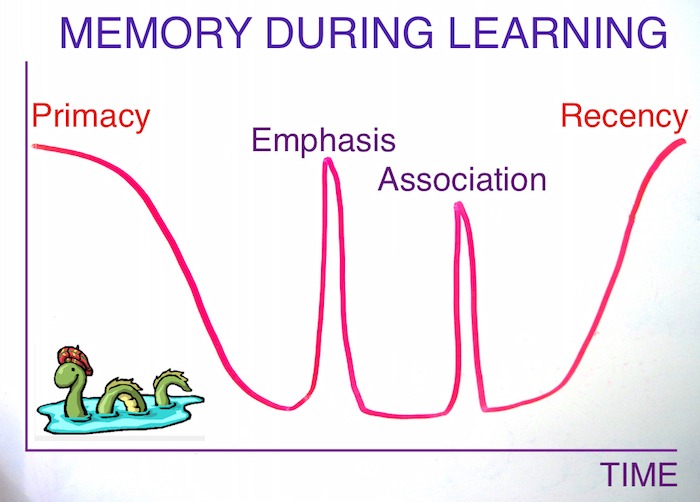Remember this memory graph to never forget again.
If you want to get ahead of the curve you’re going to have to remember a lot of stuff – reading with a measure of retention and understanding!
Maybe you were never very successful at school– And maybe you’re not a good studier–most of us just got by at school. And you can’t help but feel you are doing this “studying thing” wrong?
If you have new specialist exams coming up you’re going to have to commit stuff to long term memory rather than cramming. So …
Sign up for – FREE – How To Learn 200% Faster Secrets.
I’ll mail you a free “Business Writing that Works” textbook by Sharon Pywell if you are one of the first 5 to respond
And if you’ve never been really good at study you don’t even remember what you did.
As you read, a dozen related thoughts pop up. After packing away all those ideas, killing the process of the dumb ones and writing down the good ones, you don’t remember where you were on the page and have to start over. Or you will have continued to go through the motions of reading ahead for five paragraphs, realise this, and not have any comprehension or memory of what you read.
Paging through textbooks is a pain in the butt. But this graph will help you get that degree. It will certainly save you lots of time.
Before that, lets digress briefly. Loch Ness is a freshwater lake in Northern Scotland. The lake is about 23 miles long and perhaps half a mile wide. A drive from Inverness down the north-west side of the lake to the Drumnadrochit Hotel will take you about 20 minutes.
If you’d have stopped the car late one afternoon long ago – and looked southeast across the misty Loch towards Urquhart Castle, you may have been lucky enough to see Nessie the Loch Ness monster. Here’s a pic

Why she is important now is that she is going to help us to remember the shape of the graph of how your memory works during the process of learning.
MEMORY DURING LEARNING
You’ve heard about about short term memory and long term memory. We’re going to talk about memory in a different kind of way.
“Memory during” means what happens when you form your memories. Memory during is memory during learning, during workshops, during an hour of study, during a movie, during your life, during anything.
Its the process of forming the memory. Its called “encoding“ by academics. You need to understand what information is likely to end up in your long term memory when you study or sit through a powerpoint. Right?
Long term memory will be the process of what we’ll call “memory after.” It’s what happen when we try to recall a memory that is there, stored or encoded.
Now take a look at this graph coming from countless memory studies. This is the graph of recall against time during the process of learning. Its called a serial position curve.


This is the graph of recall against time during learning. What you remember along the timeline. It’s high in the beginning and high at the end. Not much else gets remembered except for a couple of things which we will come to in a moment.
Graphs like this come from many memory studies originally by Prussian philosopher/psychologist Hermann Ebbinghaus in 1885 and more recently by others such as Ben Murdock at the University of Toronto in 1962. The memory guinea pigs in the study are asked to remember as many words as they can— the words are read out at perhaps one second intervals. When the words have been read out the subjects are asked to write down as many as they can remember.
Primacy Effect
Notice that recall is high for the first few words. It’s just common sense that we remember firsts or beginnings. Psychology calls this the Primacy Effect.
So we remember beginnings. You can probably remember your first ride in a bicycle, your first day of school. I certainly can. First day of school – I mean can you remember your 273rd day at school? No-one in his right mind remembers his or her 273rd day at school!
So we remember beginnings.
Recency Effect
Now look at the other end of the graph. This zone is given a very sensible, practical name. Because we remember the most recent things. It’s common knowledge. It’s easy to remember what you had for supper last night. Can you remember supper last night? What about the night before that? And the night before that? So obviously it’s easier to remember things that are closer to you. We remember things that are recent. So this is called the Recency Effect.
So we tend to remember beginnings and we tend to remember ends of things…of a learning experience, of a lecture, of a video, of a reading a book.
Recall the first few minutes, the last few minutes. It’s just how the brain works.
Association
What about the kinks on the graph? That was where there were words being read out that were linked to personal experiences of the subjects in the experiment.
We remember by association. So we remember things that are linked by being personally relevant, interesting, that happen to connect with us. And repetition is a subset of this. If words are repeated we think “Oh there it is again, oh there it is again”.
Emphasis
If one of the words read by the experimenter was completely out of context, the memory graph also takes a jump. Say we were to read out a list of nonsense words, in amongst which was the word Muhammad Ali. Everybody remembers Muhammad Ali. Why do you remember Muhammad Ali? It’s a longer word, it’s double barrelled. Its completely out of context, a colourful character.
It’s emphasised by virtue of being different from the background. So its called outstandingness, or emphasis.
So now we have 4 key memory principles: we have primacy and recency, association and emphasis.
Emphasis deserves more… well, emphasis! There is a technical name for emphasis. It’s called the “Von Restorff Effect.”
Hedwig von Restorff was the Berlin psychiatrist/paediatrician who showed in 1933 that whenever something we see is unusual, or different, or set off from the background – that thing will tend to be remembered better than the boring old everything else.
Undergraduate student Frank Garcia was able to show that the von Restorff Effect even improved the primacy on a 20 word list of words presented in powerpoint. He put a red word in at position 11. Other studies suggest that this improves recall on the entire experience.
So now you know what to do with your PowerPoints!
Unusual, traumatic events like the Boston Bombing get remembered. Can you remember where you were, when the news came through that Princess Diana had been driven into the tunnel in Paris, and sadly was carried out the other side. What time of the day was it when you heard the news? Most people can remember these dramatic events. It is sometimes called “flashbulb memory”.
As another example of the von Restorff effect, a well-known South African oil industry executive was giving his presentation in a prestige venue. He lit some fireworks and unfortunately their very thick smoke got detected and the sprinkler system soaked 500 people. So for 20 years he had people coming up to him and and saying “ah I remember the day … we got wet!”
So lets imagine you are sitting in a 1 hour presentation, or sitting and reading a textbook, or studying for an hour, or watching a movie for an hour. All other things being equal you’ll tend to remember the first couple of minutes, tend to remember the last couple of minutes, and not much else. Except that you’ll remember it if it’s personally relevant or hooked or connected in some way. Also, things that are deliberately dramatised or emphasised or unusual. Anything set off from the background, highlighted if you like, and not much else. This makes sense in terms of your own experience, does it not?
In summary: Experiments show that when participants are presented with a list of words, they tend to remember the first few and last few words and are more likely to forget those in the middle of the list. This is known as the serial position effect, a term coined by Herman Ebbinghaus. The tendency to recall earlier words is called the primacy effect; the tendency to recall the later words is called the recency effect.
And the whole graph is elevated by having items that are associated or emphasised in there.
SO HERE ARE 7 PRACTICAL USES OF THE GRAPH OF MEMORY DURING LEARNING
1. PRESENTATIONS: your audience will remember the first few minutes, The last few minutes and anything you emphasise or that is personally relevant to them. So start with a very brief summary and end with a review.
2. SPEECHES: there is an old formula for giving a successful speech. It goes something like this: ‘Tell em what you’re going to tell em; tell em; and finally tell em what you told em.’ That way you have capitalised on primacy and recency. Plus you have used repetition – a subset of association.
3. TRAININGS: Use interaction. Recall we remember what is personally relevant. But you don’t know what is relevant for your audience unless you ask them questions. Then you hook your wonderful content onto their answers.
4. KEEP IT SHORT – TAKE BREAKS: the longer the time between the beginning and ending of your learning or delivery session, the lower the recall. Therefore, keep it short. Putting short breaks into your session that would otherwise run longer than an hour makes a profound difference to the amount recalled. This way you introduce more than one primacy and recency. It’s like chopping Nessie into several sections. Each one grows a new head and tail.
5. LET GO ON CLOSURE: Carrying on the idea above, keep working sessions short. End on time rather than at a natural break point. This is counter-intuitive but it triggers a thing called the Ziegarnik Effect, after Bluma Ziegarnik, a Soviet psychologist. In 1927 she showed waiters remembered incomplete orders better than completed ones.
David Straker on his brilliant site *** suggests that to remember things for examinations, take breaks when a module is not necessarily complete, i.e. on time. Then the ongoing thinking about the incomplete task helps keep important facts in mind. http://changingminds.org/explanations/memory/zeigarnik_effect.htm
6. REPORTS, BLOGS, ASSIGNMENTS: Start with an enticing preview, and end with a thorough summary.
7. DEMONSTRATIONS: Capitalise on association and emphasis with relevant jokes, stories, anecdotes, audience participation, question and answer sessions, repetition, chanting, visuals, pauses, and alliteration.
Sign up for – FREE – How To Learn 200% Faster Secrets.
I’ll mail you a free “Business Writing that Works” textbook by Sharon Pywell if you are one of the first 5 to respond
MEMORY RESEARCH REFERENCES
Atkinson, R. C., & Shiffrin, R. M. (1968). Chapter: Human memory: A proposed system and its control processes. In Spence, K. W., & Spence, J. T. The psychology of learning and motivation (Volume 2). New York: Academic Press. pp. 89–195.
Glanzer, M., & Cunitz, A. R. (1966). Two storage mechanisms in free recall. Journal of Verbal Learning and Verbal Behavior, 5(4), 351-360.
Murdock, B. B. (1962). The serial position effect of free recall. Journal of Experimental Psychology, 64(5), 482–488.
Zeigarnik, B.V. (1927). Über das Behalten von erledigten und unerledigten Handlungen (The Retention of Completed and Uncompleted Activities), Psychologische Forschung, 9, 1-85
Zeigarnik, B.V. (1967). On finished and unfinished tasks. In W. D. Ellis (Ed.), A sourcebook of Gestalt psychology, New York: Humanities Press